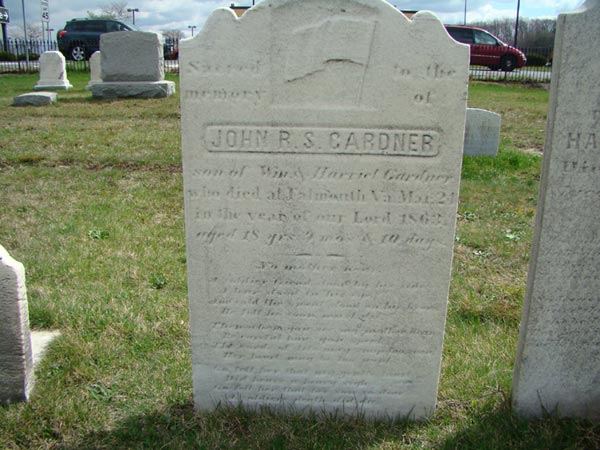| Camden Courier-Post - February 15, 1928 |

|
|
|
|
JOHN RICHARD SNEATH GARDNER was born was born on August 14, 1854 to William and Harriet Gardner. He was named in part after the Rev. Richard Sneath (1751-1824), a famous Methodist evangelist of the day. Sneath pastored at several South Jersey churches and was active in Camden, Gloucester, and Atlantic counties. In 1809, in Camden, then known as Cooper�s Ferry, not being named Camden until 1828, under the direction of Rev. Richard Sneath, a class of seven members was formed with James Duer, a member of St. George�s, Philadelphia, as leader. This class became the First Methodist Episcopal Church, which stood until its razing in the mid 2000s at the corner of South 6th Street and Stevens Street. John R.S. Gardner's father was a farmer. The family lived in Washington Township, which, prior to 1871, was in Camden County. Washington Township was incorporated by an Act of the New Jersey Legislature on February 17, 1836, from portions of Deptford Township. The Township officially moved to the newly created Camden County on March 13, 1844. Most of Washington Township, along with all of Monroe Township, was moved back into Gloucester County on February 28, 1871, with the remaining portions of Washington Township that were still in Camden County being transferred to Gloucester Township. The 1850 Census lists the Gardner family, showing John R.S. Gardner to be the youngest of four children then still at home, the others being Joseph, aged 17, Charles, 10, and Harriet, 8. The three youngest children still lived at home when the 1860 Census was enumerated. On
August 22, 1862 John R.S. Grdner enlisted as a private in the Union
army. On September 4, 1862 he was added to the roster of Company D, 12th
Regiment New Jersey Infantry, under the command of Col. Robert C.
Johnson. This regiment was raised under the second call of the Stephen Crane's famous Civil war novel, Red Badge of Courage , is probably as good a description as to the conditions that John R.S. Gardner and his comrades in the 12th New Jersey dealt with during that time. Red Badge begins with the Union Army encamped north of the Rappahannock river. To the south can be seen the "red eyelike gleam" of Confederate campfires. The army has been in camp for some time, as the soldiers have built semi-permanent structures in which to live: soon after the "youthful private," Henry Fleming, is introduced he retreats into a structure of "log walls" with a "folded tent" for a roof and a fireplace with a clay chimney. Henry wonders if the army will ever see action. After its glorious reception in Washington, Henry's regiment has settled down to "months of monotonous life" in what seems an "eternal camp" and done little but "sit still and try to keep warm." With the arrival of warmer weather, the soldiers are "drilled and drilled and reviewed, and drilled and drilled and reviewed". Crane's description of the situation of the Union army in Red Badge is drawn directly from that of the actual Army of the Potomac in April, 1863. The army's members had had time to build temporary cabins, having spent much of the winter encamped at Falmouth, Virginia, on the north bank of the Rappahannock River opposite the Confederate army. It was while encamped at Falmouth that John R.S. Gardner, who had been promoted to Corporal, died of disease on March 24, 1863. A few weeks later, on May 3, 1863 the 12th New Jersey engaged in its first battle, at Chancellorsville, Virginia. After three days fighting, the Regiment, having performed with great gallantry, had lost over a tenth of its men. 179 soldiers were recorded as killed, wounded or missing. The Gardner family had their son's body returned to New Jersey. He was buried at the cemetery of St. John's Methodist Episcopal Church in Turnersville. |
|
Thanks to Howard Gant for his help in creating this page. |
![]()
RETURN TO CAMDEN CIVIL WAR MONUMENT WEB PAGE